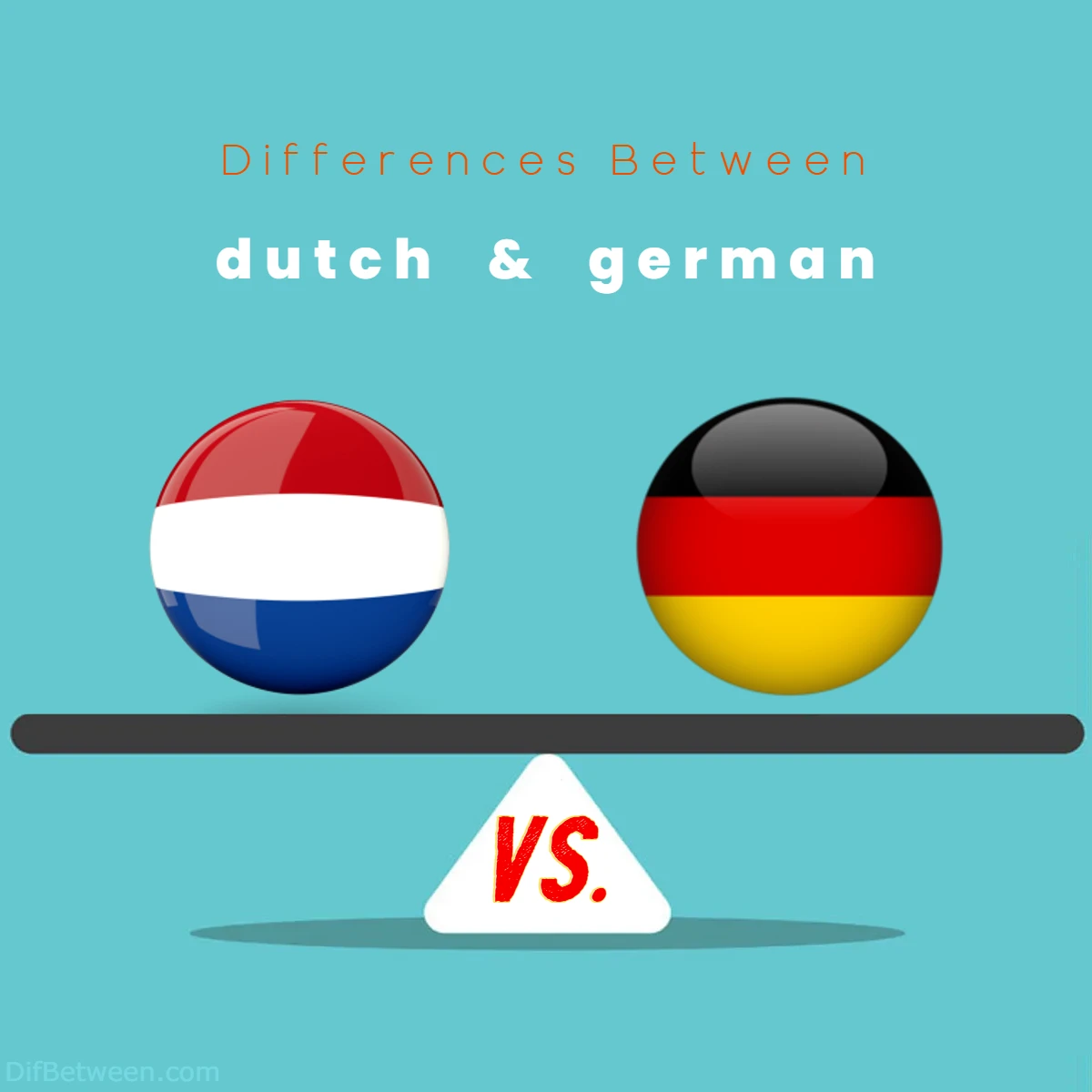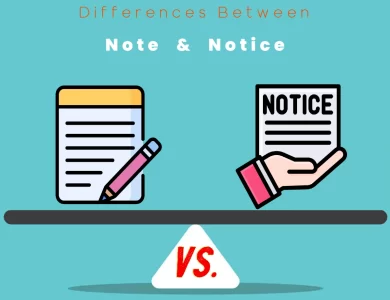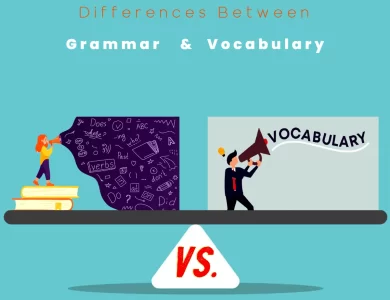
| Aspect | Dutch | German |
|---|---|---|
| Language Origins | Evolved in the Low Countries (Netherlands, Belgium) | Evolved in the region of modern-day Germany |
| Grammar and Syntax | – Two genders (common and neuter) – Subject-Verb-Object (SVO) word order | – Three genders (masculine, feminine, neuter) – Flexible word order, verb often at the end of subordinate clauses |
| Vocabulary and Word Differences | – Influence from Latin, French, and Low German – Some cognates with English | – Influence from Latin and French – Some cognates with English, but may differ in meaning |
| Pronunciation | – Guttural “g” sound – Stress often on the first syllable | – Distinct vowel sounds and umlauts (ä, ö, ü) – Guttural “ch” sound – Complex stress placement |
| Verb Conjugation | – Conjugated based on tense and subject – Fewer irregular verbs | – Conjugated based on tense, mood, person, and number – More irregular verbs |
| Cultural and Regional Differences | – Dutch culture known for liberalism and tolerance – Rich artistic heritage | – Diverse culture with regional variations – Contributions to classical music, philosophy, and science |
| Mutual Intelligibility | – Some mutual intelligibility, especially in written form | – Some mutual intelligibility, especially in written form |
| Dialects and Regional Variations | – Significant dialectal variations in the Netherlands and Belgium | – Extensive dialects, e.g., Bavarian, Swabian, Low German |
| Formality and Politeness | – Generally less formal in speech – Limited use of formal pronouns and titles | – Emphasis on formal language and politeness – Distinct forms of address for formal and informal situations |
| Popularity and Number of Speakers | – Approximately 24 million speakers worldwide | – Over 90 million native speakers, widely spoken in Europe |
| Language Learning Resources | – Duolingo, Rosetta Stone, Taalhuis | – Goethe-Institut, Deutsche Welle, Babbel |
| Travel and Exploration | – Ideal for exploring the Netherlands and Belgium | – Opens doors to travel in Germany, Austria, Switzerland, and other German-speaking regions |
Dutch and German, two European siblings in the vast family of languages, share a common ancestry but have ventured down distinct paths. From grammar intricacies to unique vocabulary, from the nuances of pronunciation to the cultural tapestries they weave, we’ll dissect it all.
Differences Between Dutch and German
The main differences between Dutch and German lie in their grammar, vocabulary, and cultural contexts. While both are West Germanic languages, Dutch exhibits simpler grammar with two genders and a subject-verb-object word order, making it more accessible for English speakers. German, on the other hand, boasts a complex system with three genders, four cases, and flexible word order. Additionally, Dutch vocabulary is influenced by Latin, French, and Low German, sharing some cognates with English, while German has a rich vocabulary with influences from Latin and French, often requiring careful attention. Lastly, Dutch and German cultures vary, with Dutch culture known for its liberalism and tolerance, while German culture offers a diverse array of regional traditions and contributions to philosophy, music, and science.
1. Language Origins
Dutch: Dutch, also known as Nederlands, hails from the Low Countries, primarily the Netherlands and Belgium (where it’s called Flemish). Its roots can be traced back to the early Middle Ages when various Germanic tribes settled in the region. Over time, Dutch developed as a separate language influenced by Latin, French, and Low German.
German: German, or Deutsch, is the official language of Germany, Austria, and parts of Switzerland, Liechtenstein, and Luxembourg. Its origins can be traced back to the Germanic tribes of the early centuries AD. While it shares a common ancestor with Dutch, it evolved separately into what we now know as the German language.
2. Grammar and Syntax
Dutch: Dutch grammar is known for its relative simplicity compared to German. Dutch has two genders for nouns, common and neuter, while German has three (masculine, feminine, and neuter). Dutch also has a less complex system of noun declensions compared to German. Word order in Dutch is typically subject-verb-object (SVO), similar to English, making it somewhat easier for English speakers to grasp.
German: German grammar is often perceived as more complex than Dutch. It has three genders for nouns and four cases (nominative, accusative, dative, and genitive), each requiring different declensions of articles, adjectives, and sometimes nouns. German also has a flexible word order, with the verb often appearing at the end of sentences in subordinate clauses, which can be a challenging aspect for learners.
Here’s a comparison table highlighting some key grammatical differences:
| Grammatical Aspect | Dutch | German |
|---|---|---|
| Gender of Nouns | Common and Neuter | Masculine, Feminine, Neuter |
| Cases | None | Nominative, Accusative, Dative, Genitive |
| Definite Articles | “de” (common), “het” (neuter) | “der” (masculine), “die” (feminine), “das” (neuter) |
| Word Order | Subject-Verb-Object (SVO) | Flexible word order, Verb at end in subordinate clauses |
3. Vocabulary and Word Differences
Dutch: Dutch vocabulary is influenced by various languages due to its history of trade and cultural exchange. It shares some cognates with English, making it somewhat more accessible for English speakers. However, Dutch words may have different meanings or nuances compared to their English counterparts.
German: German vocabulary is rich and diverse, with a significant influence from Latin and French, especially in academic and technical fields. While there are some cognates between German and English, they often require careful attention due to differences in pronunciation and meaning.
Here are a few examples of vocabulary differences between Dutch and German:
- English: Car
- Dutch: Auto
- German: Auto
- English: Train
- Dutch: Trein
- German: Zug
- English: Hospital
- Dutch: Ziekenhuis
- German: Krankenhaus
4. Pronunciation
Dutch: Dutch pronunciation is generally considered easier for English speakers due to similarities in vowel sounds. Dutch has a guttural sound represented by the letter “g,” which can be challenging for some learners. Additionally, Dutch has a relatively straightforward system of stress placement, with stress typically falling on the first syllable of a word.
German: German pronunciation can be more challenging for English speakers because of its distinct vowel sounds and the presence of umlauts (e.g., ä, ö, ü). The guttural “ch” sound in German can be particularly tricky for beginners. German also has a complex system of stress placement that varies depending on word length and syllable count.
5. Verb Conjugation
Dutch: Dutch verb conjugation is relatively simpler compared to German. Dutch verbs are conjugated based on tense and subject, but there are fewer irregular verbs than in German. The regular verb conjugation patterns are more consistent and predictable.
German: German verb conjugation can be challenging due to its extensive system of verb forms. Verbs are conjugated based on tense, mood, person, and number. German also has a larger number of irregular verbs, which require memorization.
Here’s a simplified comparison of verb conjugation in Dutch and German:
- Infinitive: To eat
- Dutch: Eten
- German: Essen
- Present Tense (1st Person Singular): I eat
- Dutch: Ik eet
- German: Ich esse
- Past Tense (1st Person Singular): I ate
- Dutch: Ik at
- German: Ich aß
6. Cultural and Regional Differences
Dutch: The Dutch-speaking world primarily consists of the Netherlands and Belgium (Flanders). Dutch culture is known for its liberalism, tolerance, and emphasis on individual freedoms. The Netherlands, in particular, has a rich artistic heritage, with famous painters like Rembrandt and Van Gogh.
German: German-speaking countries include Germany, Austria, and parts of Switzerland. German culture is diverse, with regional variations in traditions and dialects. Germany is known for its contributions to classical music (e.g., Beethoven and Bach) and its historic role in philosophy and science.
7. Mutual Intelligibility
While Dutch and German are distinct languages, they do share enough similarities that speakers of one language can often understand some of the other, especially in written form. This is known as mutual intelligibility. However, the extent of mutual intelligibility varies depending on factors such as the speaker’s proficiency, context, and dialect.
8. Language Learning Considerations
When choosing between learning Dutch or German, consider your personal goals and interests:
Learn Dutch If:
- You plan to live or work in the Netherlands or Flanders.
- You want a language with relatively simple grammar and pronunciation compared to German.
- You are interested in Dutch culture and history.
Learn German If:
- You plan to live or work in Germany, Austria, or Switzerland.
- You have a particular interest in German literature, philosophy, or music.
- You enjoy the challenge of mastering a language with complex grammar and rich vocabulary.
9. Dialects and Regional Variations
Dutch: Dutch dialects vary significantly across different regions of the Netherlands and Belgium. Flemish Dutch, spoken in Belgium, has its own distinct variations and vocabulary. Some of the well-known Dutch dialects include Brabants, Limburgs, and Zeelandic. These dialects can sometimes be quite different from Standard Dutch, which is used in formal settings and the media.
German: Germany is known for its diverse range of dialects, with variations often corresponding to specific regions. These dialects can sometimes be so distinct that speakers of Standard German may struggle to understand them. Notable German dialects include Bavarian (Bayrisch), Swabian (Schwäbisch), and Low German (Plattdeutsch).
10. Formality and Politeness
Dutch: Dutch tends to be less formal in everyday speech compared to German. The use of formal pronouns and titles is less common, and there is generally a more relaxed approach to social interactions. However, this can vary depending on the context and individual preferences.
German: German places a stronger emphasis on formal language and politeness. There are distinct forms of address for formal and informal situations, with “Sie” used for formal and “du” for informal. This formality extends to business and social interactions, where using the correct form of address is considered essential.
11. Popularity and Number of Speakers
Dutch: Dutch is spoken by approximately 24 million people worldwide. The majority of Dutch speakers are in the Netherlands and Belgium, but there are Dutch-speaking communities in other countries, including Suriname and parts of the Caribbean.
German: German is one of the most widely spoken languages in Europe, with over 90 million native speakers. It is also a significant second language in many countries. Due to Germany’s economic and cultural influence, learning German can open up opportunities in business and academia.
12. Language Learning Resources
When embarking on a journey to learn Dutch or German, it’s essential to have access to quality learning resources. Here are some popular resources for each language:
For Learning Dutch:
- Duolingo: A popular language learning app that offers Dutch courses.
- Rosetta Stone: Provides comprehensive Dutch language courses.
- Taalhuis: A Dutch language institute offering courses and resources for learners.
For Learning German:
- Goethe-Institut: A well-known organization that offers German language courses and exams.
- Deutsche Welle: Provides free online German courses and resources.
- Babbel: Offers interactive German courses for learners.
Dutch or German: Which One is Right Choose for You?
Choosing between learning Dutch and German can be a significant decision, and it largely depends on your personal goals, interests, and circumstances. Both languages offer unique advantages and challenges. Let’s explore some factors to consider when making this decision:
Your Goals and Purpose
Dutch:
- Choose Dutch if you plan to live, work, or study in the Netherlands or Belgium (Flanders).
- Dutch is beneficial for careers in international business, particularly if you are interested in companies with a Dutch presence.
- If you have a specific connection or fascination with Dutch culture, history, or art, learning Dutch can enhance your appreciation.
German:
- Opt for German if you intend to live, work, or study in Germany, Austria, Switzerland, or other German-speaking regions.
- German is advantageous in various industries, including engineering, automotive, and technology, as many global corporations are headquartered in German-speaking countries.
- If you have a passion for classical music, philosophy, or literature, German provides access to a rich cultural heritage.
Language Complexity and Ease of Learning
Dutch:
- Dutch is often considered easier for English speakers due to its simpler grammar and pronunciation compared to German.
- The straightforward word order (Subject-Verb-Object) is similar to English, making Dutch more accessible.
German:
- German can be more challenging due to its complex grammar, including cases and verb conjugation.
- Pronunciation, including umlauts and the guttural “ch” sound, can pose difficulties for beginners.
Cultural and Regional Interests
Dutch:
- If you have a fascination with Dutch painters like Rembrandt and Van Gogh, or you appreciate Dutch cuisine and traditions, learning Dutch can deepen your cultural connection.
- Dutch culture is known for its liberalism and progressive values.
German:
- If you are interested in exploring diverse regional cultures within Germany, Austria, or Switzerland, learning German can be rewarding.
- Germany’s contributions to music, philosophy, and science offer a wealth of cultural experiences.
Number of Speakers and Business Opportunities
Dutch:
- Dutch is spoken by around 24 million people primarily in the Netherlands and Belgium.
- While Dutch-speaking countries have strong economies, the number of speakers is smaller compared to German.
German:
- German boasts over 90 million native speakers and is widely spoken in Europe.
- Germany is a global economic powerhouse, making German a valuable asset in international business.
Language Learning Resources
Dutch:
- Consider the availability of language courses, apps, and online resources for Dutch learners in your region.
- Dutch language institutes like Taalhuis can provide structured learning opportunities.
German:
- The Goethe-Institut offers comprehensive German language courses and certification exams.
- Numerous online resources and apps like Deutsche Welle and Babbel are available for German learners.
Travel and Exploration
Dutch:
- If you plan to explore the Netherlands or Belgium extensively, knowing Dutch can enhance your travel experiences and interactions with locals.
German:
- Learning German can open doors to travel in Germany, Austria, Switzerland, and other German-speaking regions, providing access to diverse landscapes and cultures.
In conclusion, the choice between Dutch and German should align with your specific goals and interests. Dutch offers a simpler learning curve and is ideal for those with connections to Dutch-speaking regions, while German provides access to a larger number of speakers and diverse cultural experiences. Ultimately, both languages are valuable and can enrich your personal and professional life. So, consider your motivations, explore the resources available to you, and embark on your journey to learn the language that best suits your aspirations.
FAQs
Dutch has simpler grammar with two genders and a subject-verb-object word order, while German has three genders, four cases, and flexible word order.
Yes, both languages share some cognates with English, and there is mutual intelligibility in written form to some extent.
Dutch is often considered easier due to its simpler grammar and pronunciation, making it more accessible to English speakers.
While there is some mutual intelligibility, it’s best to use the appropriate language in its respective region. Dutch is primarily used in the Netherlands and Belgium, while German is spoken in Germany, Austria, Switzerland, and more.
Dutch culture is known for its liberalism and tolerance, while German culture offers diverse regional traditions and significant contributions to philosophy, music, and science.
It depends on your career plans and target regions. Dutch is advantageous for Dutch-speaking countries, while German opens doors in Germany, Austria, Switzerland, and beyond.
You can find language courses and apps like Duolingo, Rosetta Stone, Goethe-Institut, Deutsche Welle, Babbel, and more to aid your language learning journey.
While some understanding may exist due to shared linguistic roots, it’s advisable to learn the language of the region you plan to visit for a smoother travel experience.
Dutch pronunciation includes a guttural “g” sound and stress on the first syllable, while German has distinct vowel sounds, umlauts (ä, ö, ü), a guttural “ch” sound, and complex stress placement.
Dutch is beneficial for international business, especially in Dutch-speaking companies, while German is advantageous in industries such as engineering, automotive, and technology, where many global corporations are headquartered.
Read More:
Contents
- Differences Between Dutch and German
- 1. Language Origins
- 2. Grammar and Syntax
- 3. Vocabulary and Word Differences
- 4. Pronunciation
- 5. Verb Conjugation
- 6. Cultural and Regional Differences
- 7. Mutual Intelligibility
- 8. Language Learning Considerations
- 9. Dialects and Regional Variations
- 10. Formality and Politeness
- 11. Popularity and Number of Speakers
- 12. Language Learning Resources
- Dutch or German: Which One is Right Choose for You?
- FAQs






